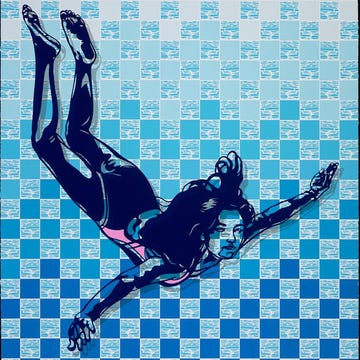Adaline Dutton Kent (1900–1957) was Bay Area royalty. She was also a central figure in San Francisco’s art scene and, by her own admission, a nature “addict.” An exhibition of Kent’s paintings, drawings, sculptures, and ephemera is on display at San Francisco’s Altman Siegel gallery through July 13. The show, which follows a retrospective on Kent that ran from January to September 2023 at the Nevada Museum of Art, also features a selection of pieces by Kent’s peers, including Ansel Adams, Ruth Asawa, and Diego Rivera, placing her work within the art-infused San Francisco of the interwar period.
This essay was adapted from the Alta Weekly Newsletter, delivered every Thursday. To keep reading, become an Alta Journal member for as little as $3 a month.
SIGN UP
Kent was born about 17 miles north of San Francisco in Marin County, in Kentfield, a town named after her grandfather, where the middle school still bears her grandmother’s name. Kent’s mother, Elizabeth Thacher Kent, was a pioneering suffragette, and her father, William Kent, was a U.S. representative. Committed environmentalists, the family donated land to the U.S. government in several areas that are now national parks or monuments, including Muir Woods. Kent may have shrugged off her upper-crust roots in favor of a bohemian lifestyle in San Francisco and Europe, but her family’s commitment to conservation persisted and influenced much of her artwork.
After graduating from Vassar in 1923, Kent enrolled at the California School of Fine Arts (later renamed the San Francisco Art Institute), where she studied sculpture with Ralph Stackpole, a figurehead of San Francisco art in the 1920s and ’30s. Kent spent the following academic year in Paris, at the Académie de la Grande Chaumière, where she studied with Émile-Antoine Bourdelle, a former student of Auguste Rodin, whose own students included Henri Matisse and Alberto Giacometti. After returning to San Francisco for a final year at CSFA, Kent became a major player in the local art scene, which coalesced around the Monkey Block, a cluster of buildings on Montgomery Street that housed dozens of artists’ studios. From 1939 to 1940, her work was included in the Golden Gate International Exposition on Treasure Island, alongside that of artists like Rivera, whose Pan American Unity was on view last year at the San Francisco Museum of Modern Art.
Kent’s work drew heavy inspiration from the California landscape. She and her husband, fellow sculptor Robert B. Howard, were longtime Sierra Club members who spent much of their leisure time hiking in Marin and the High Sierra. They were also early stockholders at Sugar Bowl Resort, near Lake Tahoe. The works on view at Altman Siegel, which were made during the last 17 years of Kent’s life, offer a distilled synthesis of her artistic and natural influences.
The roughly one-and-a-half-by-two-foot terra-cotta sculpture Rendezvous (1954) calls to mind a mountain range and a Pueblo village, while the warping, circular movement of the piece gives a sense of time in addition to place. Totemic sculptures like Lighthouse for Birds (1956) and To an Ancient God (1954) each stand around two feet tall, hybrids of human-made obelisks and naturally forming cacti. The sculptures are simple and naturalistic in their construction, with rough textures and earthy tones. The mysterious qualities of their strange forms suggest a pagan influence. For Kent, art and nature were braided together in an organic weave.
“Sculpture,” she wrote, “is adventure into the unknown.”
Her paintings and drawings are no less adventurous. The tempera painting Writ (1947), a fusion of cave painting and cubist influences, shows stylized figures dotting a landscape of geometric forms. The ink, colored pencil, and charcoal drawing Untitled (Winter Landscape) (c. 1944) is even more abstract, conjuring the titular season through Kent’s choice of palette—white and icy blue—and shapes that might be skiers, ice-skaters, or snow angels. The charcoal drawing River over the Rocks and the ink-and-crayon drawings Cascade (1944), all from the Mountain Series, resemble stone formations similar to Kent’s sculptures, with waterfalls that twist in overt infinity symbols.
If these artworks are abstract, it is in the way that nature itself can be abstract. Rather than re-creating nature representationally, Kent’s work reveals what it means to experience nature “in its openness,” to quote Rilke, rather than through the viewer’s subjectivity. Kent celebrated nature on its own terms: vast and infinite.
In traditional landscape painting, an artist’s work was considered to evoke the “sublime” if it conveyed nature’s capacity to surpass human comprehension. This often manifested in paintings of natural grandeur, popularized by the Hudson River School. Kent was never so literal. For her, the journey into the unknown was both physical and metaphysical. What she returned with was elemental: the stuff of life.•
Adaline Kent will be on display at Altman Siegel until July 13.












